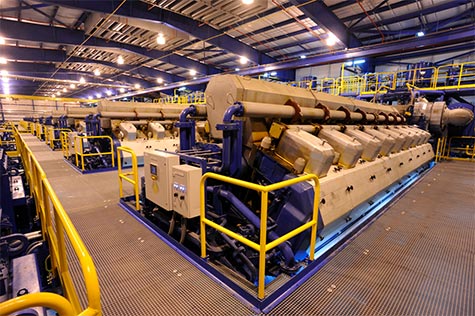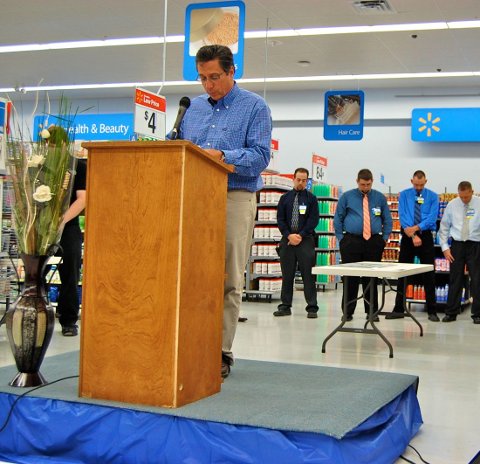Environment & Energy
Related: About this forumNREL says 80% of US electricity can be renewable by 2050 with current technology
US National Renewable Energy Lab says 80% of US electricity can be renewable by 2050, even with current technology.
Renewable Electricity Futures Study
A report published by the National Renewable Energy Laboratory (NREL), the Renewable Electricity Futures Study (RE Futures), is an initial investigation of the extent to which renewable energy supply can meet the electricity demands of the continental United States over the next several decades. This study explores the implications and challenges of very high renewable electricity generation levels—from 30% up to 90%, focusing on 80%, of all U.S. electricity generation from renewable technologies—in 2050. At such high levels of renewable electricity generation, the unique characteristics of some renewable resources, specifically geographical distribution and variability and uncertainty in output, pose challenges to the operability of the nation's electric system.
Key Findings
- Renewable electricity generation from technologies that are commercially available today, in combination with a more flexible electric system, is more than adequate to supply 80% of total U.S. electricity generation in 2050 while meeting electricity demand on an hourly basis in every region of the country.
- Increased electric system flexibility, needed to enable electricity supply-demand balance with high levels of renewable generation, can come from a portfolio of supply- and demand-side options, including flexible conventional generation, grid storage, new transmission, more responsive loads, and changes in power system operations.
- The abundance and diversity of U.S. renewable energy resources can support multiple combinations of renewable technologies that result in deep reductions in electric sector greenhouse gas emissions and water use.
- The direct incremental cost associated with high renewable generation is comparable to published cost estimates of other clean energy scenarios. Improvement in the cost and performance of renewable technologies is the most impactful lever for reducing this incremental cost.
<snip>
hunter
(38,311 posts)... and realistically factor in the cost of upgrading the distribution network and building backup capacity.
And then we still end up with natural gas power plants and hydro taking up the slack.
The vision of an 80/20 energy mix isn't any kind of utopia. I see a future of big diesel engines, fracking, and wildly fluctuating stream flows.
Natural Gas Fueled Reciprocating engines, 163 MW total output:

Apparently that's the current plan in Northern California. Engines like these will pick up the load when the wind's not blowing and the sun's not shining.
http://www.pge.com/about/environment/pge/minimpact/humboldtbay
Building new long distance transmission capacity without first implementing a ban on coal is a bad idea because new coal plants will be built in places where the coal industry owns the government or the government owns the coal industry, and the power or industrial product will be exported to places where coal mining or coal power plants are not accepted.
Northern California doesn't import a lot of coal generated electricity because the transmission capacity doesn't exist. A few western states would be happy to build new coal fired power plants. Nevertheless, even if we resist importing coal generated electricity, our box stores are full of stuff manufactured in China in factories powered by coal.
The Eureka Wal-Mart Has Been Blessed:

“Psalm 33:12 says, ‘Blessed is the nation that has God as the Lord,’” said Hydesville Community Church associate pastor Jeff Beltz from a temporary podium this past Sunday.
http://www.northcoastjournal.com/blogthing/2012/06/12/eureka-wal-mart-opening-blessing
Whatever we do, if it's not done on an international scale we are all hosed. Therefore we are all hosed.
kristopher
(29,798 posts)You've had it pointed out to you any number of times that a distributed grid such as the one being modeled by NREL in the OP is fundamentally different than the centralized thermal grid we have now. We will harnessing the differences in a fashion intended to guide change; it will not require a "ban". Coal and nuclear are not flexible sources of generation, and they simply cannot compete in a grid with a lot of no-fuel-cost renewable energy.
The key policies needed are feed-in-tariffs, strong merit order pricing regulations, and a laser focus on eliminating institutional barriers to grid access by renewable sources. With those policies at work, the system will develop of its own accord.
Finally your remark on the need to take action on an international scale is off target also. WE are the primary source of obstruction to changing the global system and WE are the linchpin. The falling prices of renewables are making them attractive to the nations with no transmission and distribution infrastructure and to nations that are developing that infrastructure. The manufacturing base is growing in response to those markets and that is pushing further cost reductions. What makes US so recalcitrant is the amount of money we have invested in existing infrastructure that will be made obsolete. Walking away from such sunk costs is one of the hardest things in the world to do, and it is working against US more than most nations.
FogerRox
(13,211 posts)Billions of dollars are flowing to offshore HVDC projects to support wind power.
I completely dont understand your view on banning coal and the grid.....
New Coal plants being built......... they'll have to compete vs the lower price points of Wind.....
The IEA reported that in 2011 Pumped hydro storage increased by 40%
ABB and Siemens are doing great business.
I see a lot of trends that do not dovetail with what U R sayin......
FogerRox
(13,211 posts)FogerRox
(13,211 posts)kristopher
(29,798 posts)FogerRox
(13,211 posts)kristopher
(29,798 posts)On an hourly basis across an entire year (8760 hours) they looked at electricity demand in all regions of the US and compared it to available renewable resources with a target of seeing if those resources could provide 80% of the required electricity - the remaining 20% was residual fossil/nuclear from today's grid.
It is stating the obvious to most of us, but the key finding was confirmation that indeed, renewables are "more than adequate to supply 80% of total U.S. electricity generation in 2050 while meeting electricity demand on an hourly basis in every region of the country".
The key term is "more than adequate" since we know that several of these resources are of sufficient quantity unto themselves to provide 100% of our power many times over.
FogerRox
(13,211 posts)That Renewables, mostly solar & wind are nnot a gross mosmatch RE: Load & demand
kristopher
(29,798 posts)It won't stop the fossil fuel/nuclear interests from trying to peddle the lie that renewables "can't do the job" but it removes any vestige of credibility their claims might have had.
Kolesar
(31,182 posts)I could play with this all day
NNadir
(33,515 posts)Eighty percent of current energy demand - which leaves about 3 billion people without access to much energy at all - would be about 420 exajoules.
The solar and wind industry, in particular, after 50 years of mindless cheering, can't produce 4 exajoules, never mind 42 or 420.
Basically the whole nightmare of wishful thinking about the grand renewable fantasy has always dumped responsibility for its inaction and wishful thinking on future generations.
I note with some disgust that almost none of the people making these extravagant claims will have to live with the consequences of their ungoing failure.
The anti-nuke fossil fuel funded Amory Lovins happily predicted in 1976 that the United States would be producing about 18 quads of solar PV energy by 2000. It's now 2012, as is widely reported.
The entire planet produces not one exajoule of energy in this way.
I recently had the occassion to ask Dave Eaglesham, Former Chief Technology Officer of First Solar whether he favored banning dangerous natural gas.
Predictably his answer was an emphatic "No!"
Of course not. The entire renewable industry is a very expensive fig leaf for the gas industry. Until this exercise in marketing, wishful thinking and self delusion is ended there is zero chance at banning dangerous fossil fuels.
kristopher
(29,798 posts)

The above charts are from REN21 2012
Scientist James Lovelock is the man behind Gaia theory, and once predicted doom for our climate. He discusses nuclear (good), wind power (bad) and why fracking is the future
...
"Adapt and survive," he says, when asked why he has decided to move. After more than three decades living amid acres of trees he planted himself by hand, he and his wife Sandy have decided to downsize and move to an old lifeguard's cottage by the beach in Dorset. "I'm not worried about sea-level rises," he laughs. "At worst, I think it will be 2ft a century."
Given that Lovelock predicted in 2006 that by this century's end "billions of us will die and the few breeding pairs of people that survive will be in the Arctic where the climate remains tolerable", this new laissez-faire attitude to our environmental fate smells and sounds like of a screeching handbrake turn.
Indeed, earlier this year he admitted to MSNBC in an interview reported around the world with somewhat mocking headlines along the lines of "Doom-monger recants", that he had been "extrapolating too far" in reaching such a conclusion and had made a "mistake" in claiming to know with such certainty what will happen to the climate.
...
Nestled deep into an armchair, Lovelock brushes a biscuit crumb from his lips, and lowers his cup of tea on to the table: "I'm neither strongly left nor right, but I detest the Liberal Democrats."
...
http://www.guardian.co.uk/environment/2012/jun/15/james-lovelock-interview-gaia-theory
See also:
James Lovelock on shale gas and the problem with 'greens'
http://www.guardian.co.uk/environment/blog/2012/jun/15/james-lovelock-fracking-greens-climate
Kolesar
(31,182 posts)nightmare of wishful thinking about the grand renewable fantasy
ungoing failure
very expensive fig leaf for the gas industry
self delusion
Troll